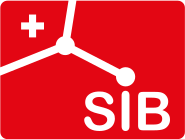Topic 2
Section outline
-
General program
Sunday 22 June
Participants arrive all day long
19h: Welcome address, introduction, and dinner
Monday 23 June
Microbiome analysis for diagnostics of pathogens, systems level' health state readouts (biosensor), immediate environment characterisation
9:00 – 12:00 George Weinstock (Washington University, USA) - The Microbiome, Infectious Diseases, and Next-generation Sequencing
Abstract: The human microbiome, the microbes that colonize the human body, affect almost all aspects of human biology. Our understanding of the microbiome has exploded as DNA sequencing methods increased data production by orders of magnitude with a comparable decrease in cost. These advances are now being applied broadly in medicine as connections are sought between our microbes and health and diseases. Moreover, traditional infectious disease approaches are also being revolutionized by nucleotide-level tracking and characterization of pathogens. Together this is providing new insights into personal and public health.
12:00 – 13:30 Lunch
13:30 – 16:30 Jeroen Raes (VIB, Vrije Universiteit Brussels, BE) - NGS and novel computational approaches to investigate human microbiome
Big data efforts applied to disease understanding, diagnostics and treatments
17:00 – 18:30 Ioannis Xenarios (SIB Swiss Institute of Bioinformatics, University of Lausanne, CH)
19:00 – 20:30 Dinner
20:30 – 22:00 Ioannis Xenarios (cont., SIB Swiss Institute of Bioinformatics, University of Lausanne, CH) - Big Data efforts applied to disease understanding, diagnostics and treatment
Abstract: The presentation will cover several aspects of knowledge representation and efforts in the curation fields, I will dedicate the first part of the presentation to the resources currently at hand in the field of biology and medicine and describe a few research and development projects that tackle large scale data analysis in Cancer, Alzheimer and Diabetes. I will also introduce some area of systems modeling as way to prioritize treatments regimen and stratify the patient population.
